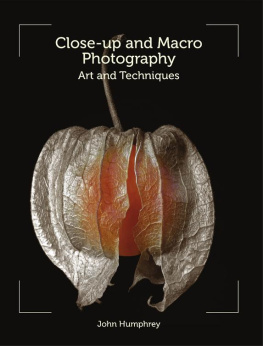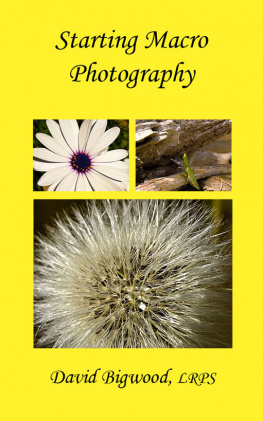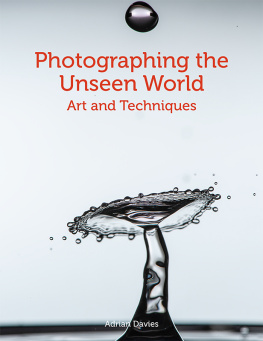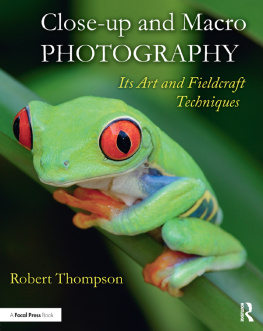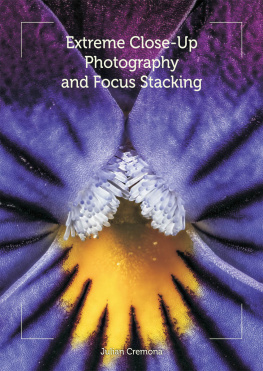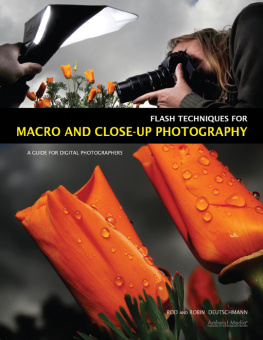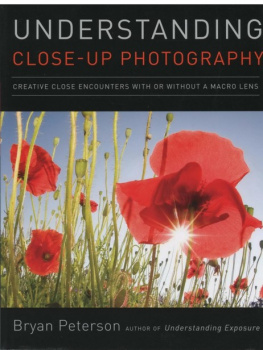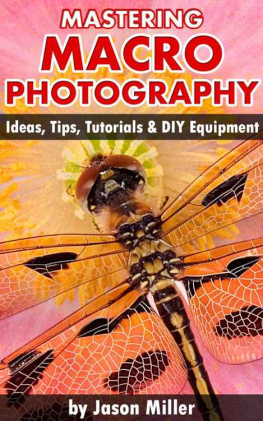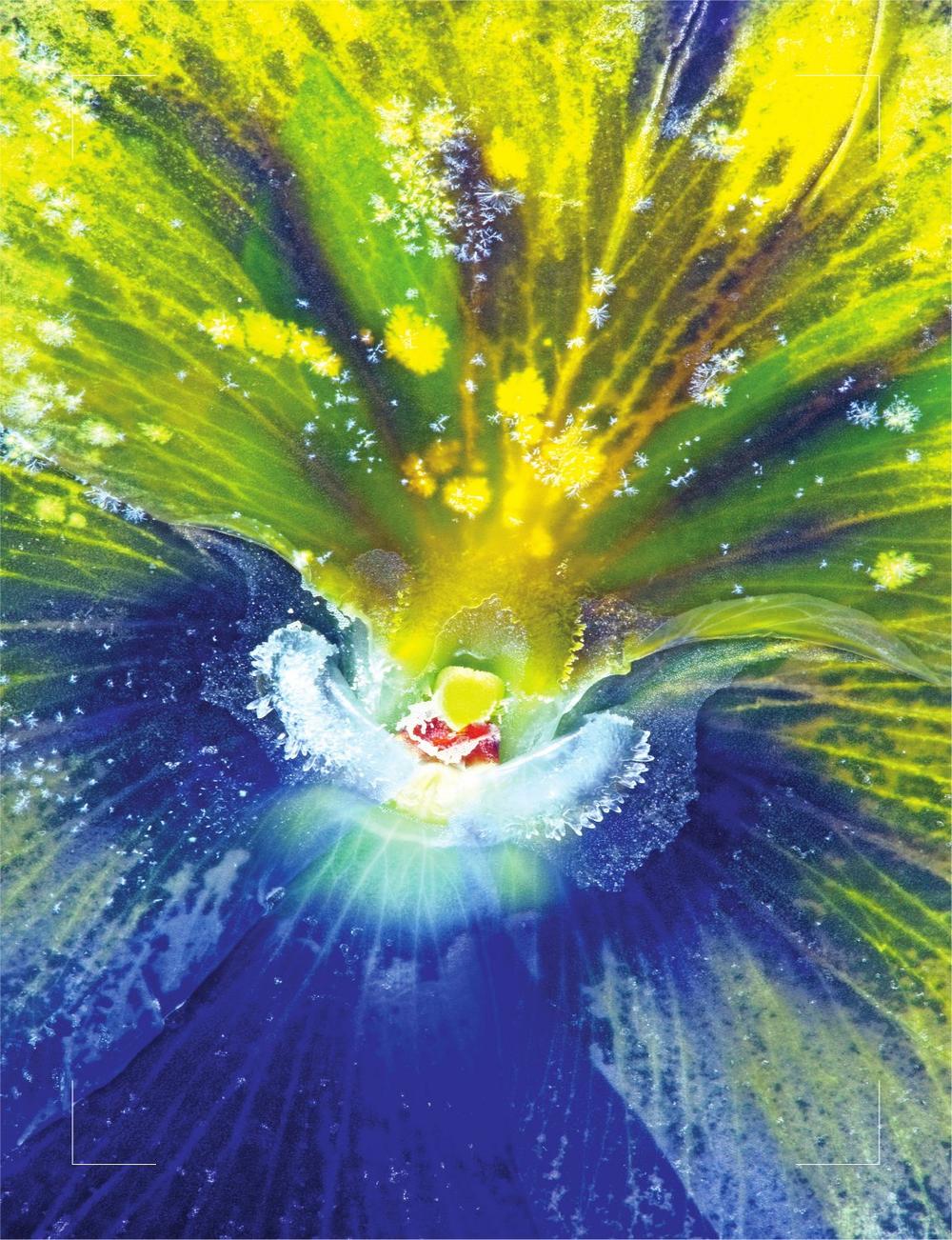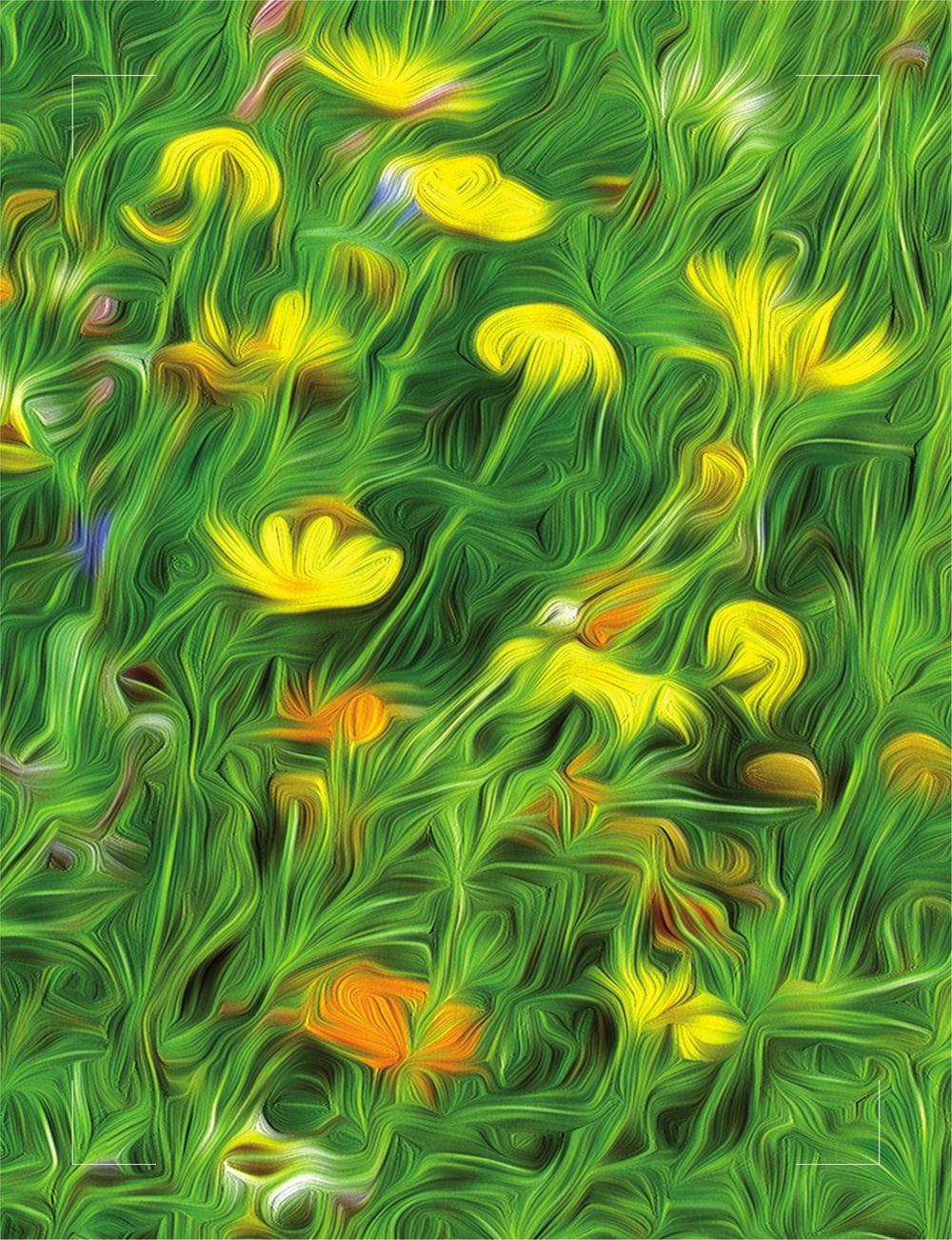P hotography at very close quarters is challenging , but also exciting and rewarding. Viewed through the close-up lens, the world reveals detail, pattern and beauty that otherwise go unnoticed.
Close-up photography moves in closer than usual to everyday objects, and macro closer still. This demands new ways of observing and the application of some particular photographic techniques. However, all of this is within the capabilities and budgets of most photographers. Advances in digital equipment and image processing software have increased the scope of close-up work and can deliver results that would not have been possible in the days of film.
This book has two objectives. The first is to offer a practical guide to the equipment and techniques required to deliver high quality, high impact close-up and macro photographs. The second is to provide ideas for subjects and approaches that can extend and enhance the readers work in this field.
Close-up and macro photography requires patience and meticulous attention to technique. Coupled with creativity and imagination, the results will be personal and distinctive. Whether your interest is in pin-sharp images of small creatures, new angles on the beauty of flowers, or colourful abstracts from tiny detail, this area of photography will prove rewarding.
Close-up and macro is a new world. I hope you enjoy exploring it.
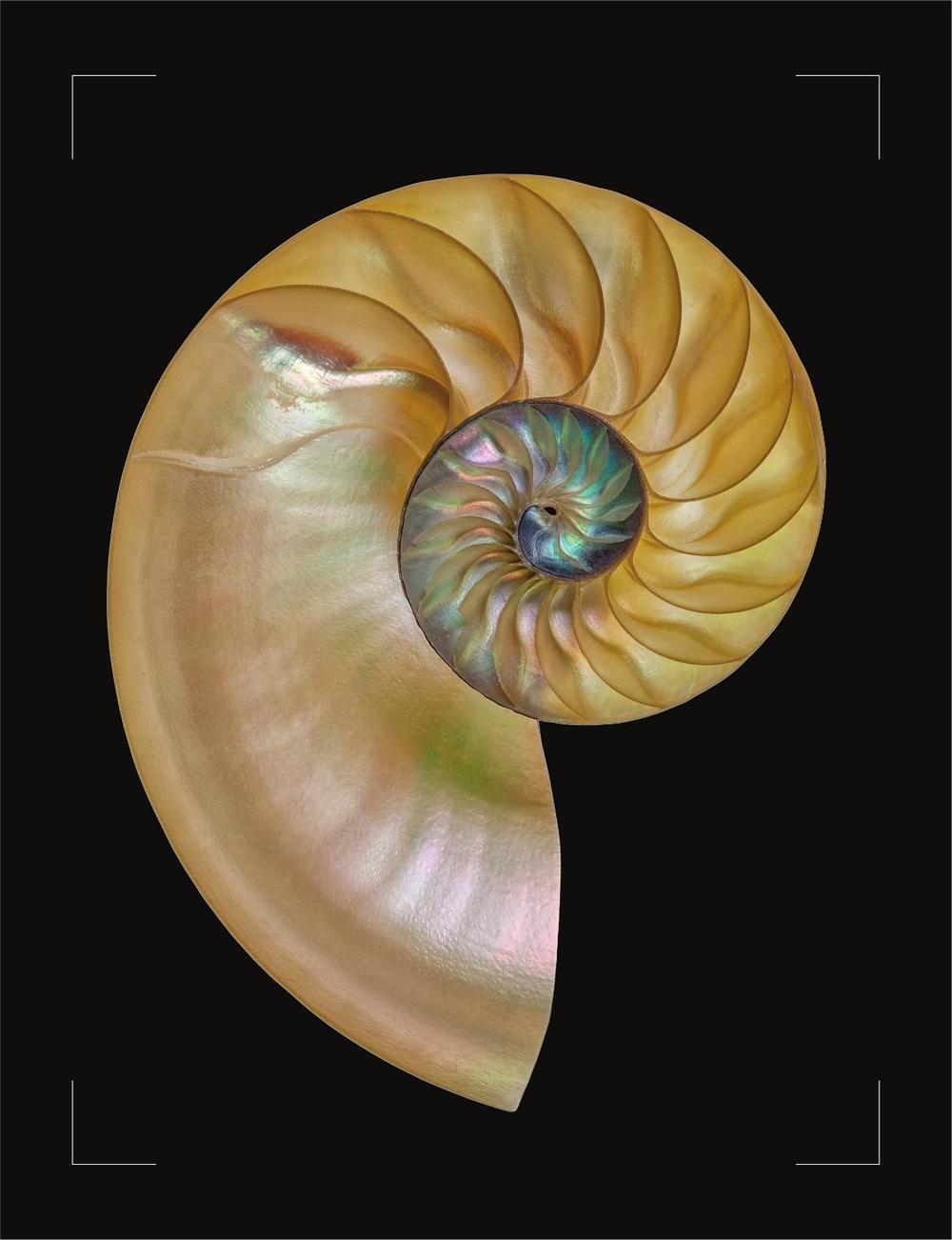
Fig. 1.1
Cut section of a nautilus shell. 100mm macro lens, ISO 100, 1/6sec, 18.
T he world of close-up and macro photography is full of jargon and technical terminology, often used rather casually. This chapter sets out and defines the main terms used throughout the book, and considers some of the key challenges in preparing for close-up work.
Close-up
Close-up photography is a descriptive term, rather than a precise scientific measure. It is simply used to describe photography where the subject is close. As a result it is rather dependent on the size of the subject. Taking a close-up picture of a fly presents quite a different challenge from taking a close-up picture of a horse.
In this book, close-up photography will cover images where the subject is reproduced at around one-twentieth of life-size or greater on the cameras image sensor.
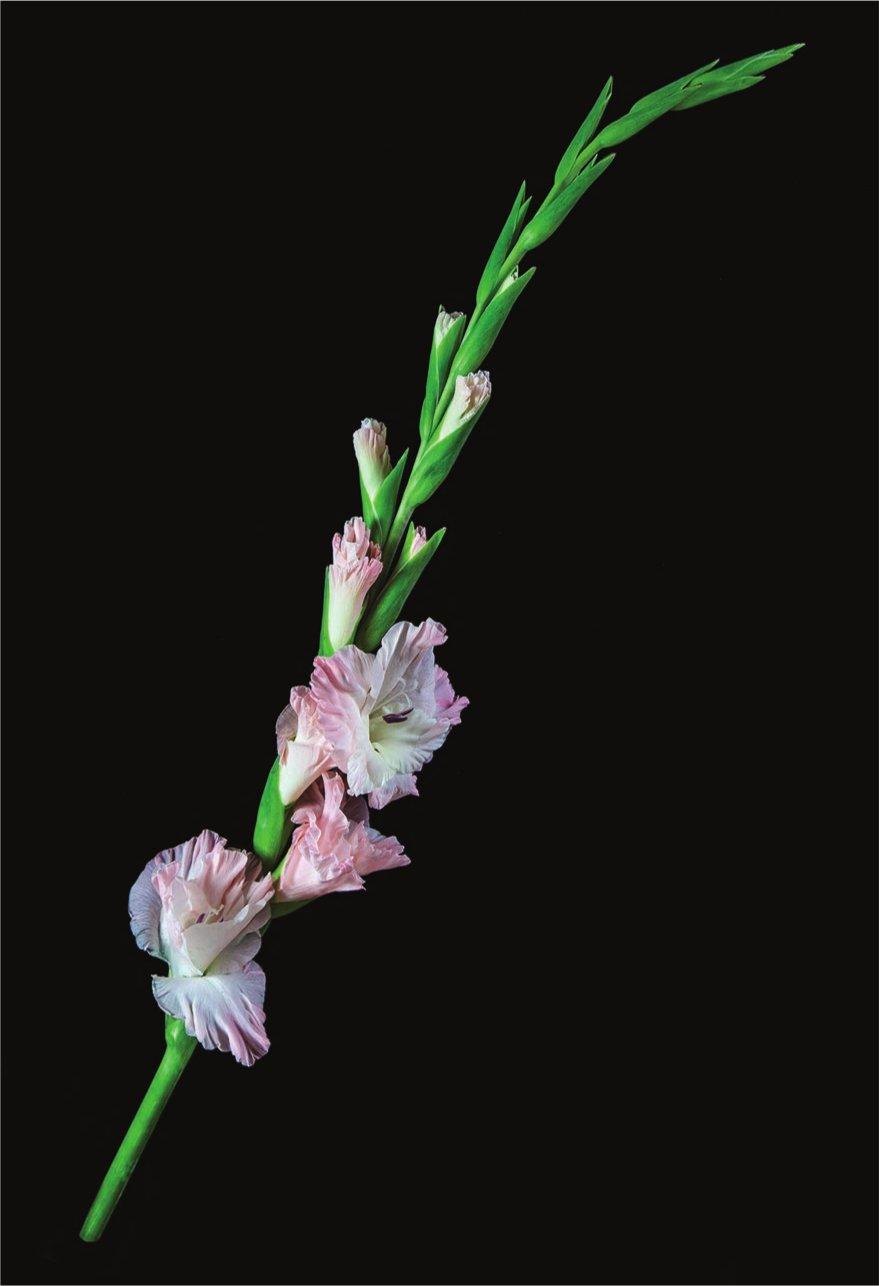
Fig. 1.2
This picture of a gladiolus flower is about one-twentieth life-size on the 36mm camera sensor, the lower end of close-up photography covered in this book.
Macro
Macro photography can be more precisely defined. It means that the image on the sensor is at least as large as the subject being photographed. A different way to express this is that the image has 1 magnification or greater.
The words macro and photography are sometimes rolled together to produce photomacrography or macrophotography, although strictly speaking photomacrography means the production of very large photographs. To confuse things further, macro has different meanings in other fields such as computer science and word processing. When the image becomes very much larger than the subject, the term micro comes into play. This is used for photography requiring the use of a microscope.
The scope of this book is from the lower end of close-up photography through to the upper reaches of macro photography that can be achieved with readily available camera and lens assemblies. This range is roughly one-twentieth to ten times life-size on the camera sensor. In practical terms, the book covers the photography of subjects ranging from about 50cm across, down to about a quarter of 1cm.
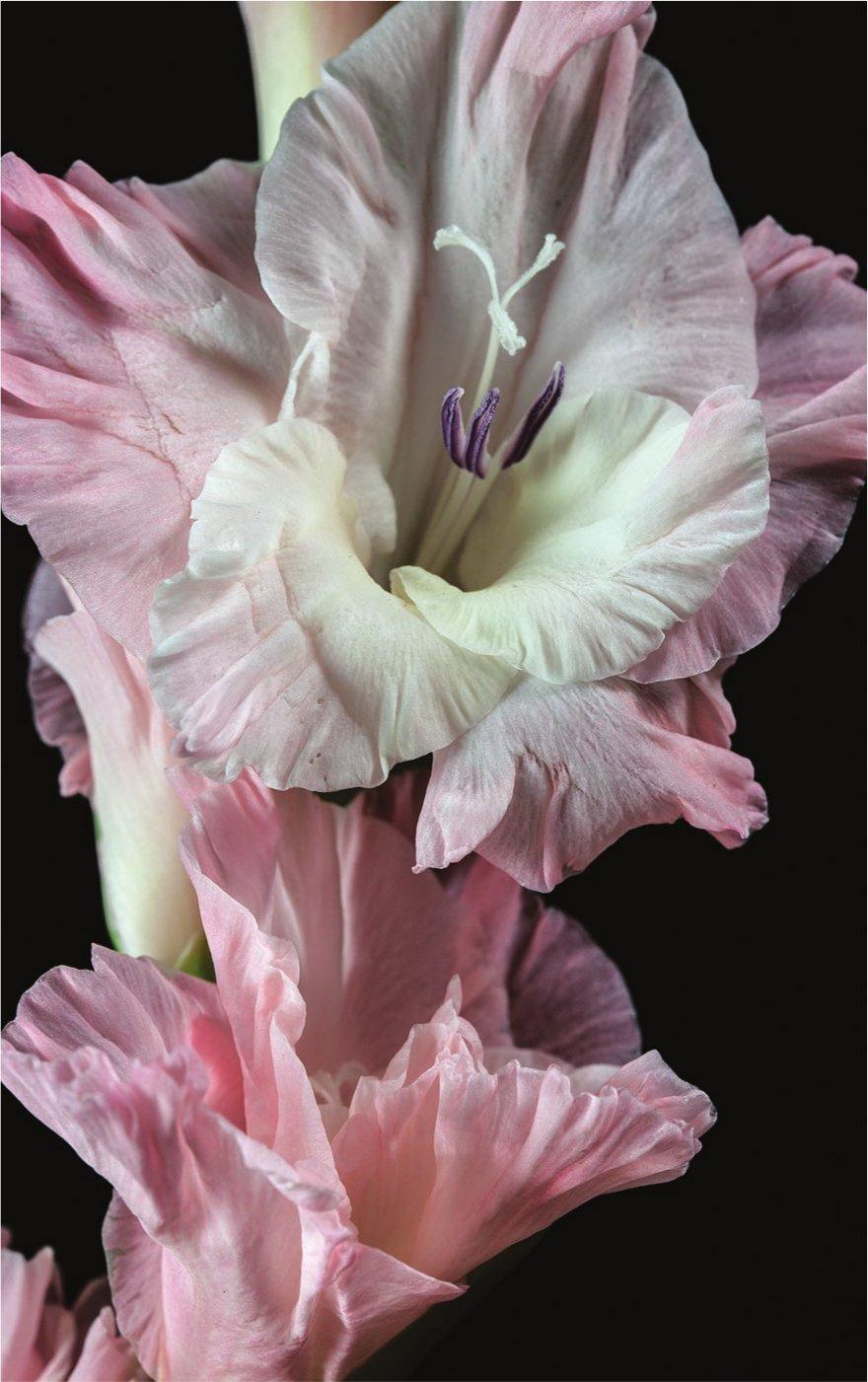
Fig. 1.3
This detail of the gladiolus is about a quarter life-size on the sensor, within the capability of most cameras without specialist macro capability.
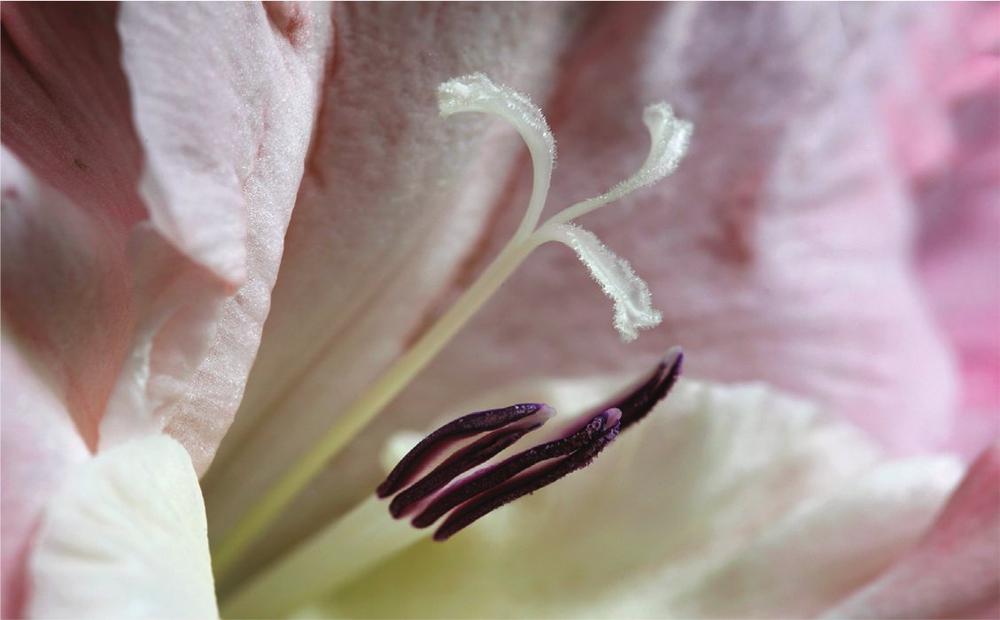
Fig. 1.4
Here the gladiolus detail is life-size on the 36mm camera sensor, just within the definition of a macro image.
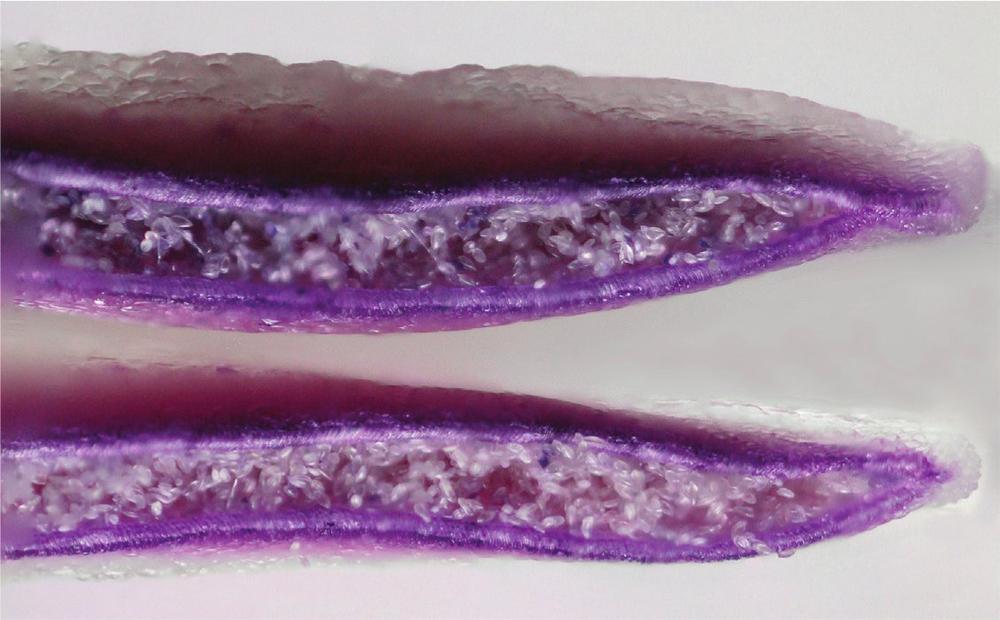
Fig. 1.5
This element of the gladiolus is magnified by ten times on the camera sensor, the upper end of macro work covered in the book.
Your Equipment Might Not Be Macro
The term macro is often used casually and incorrectly. For example, on the kit zoom lens that came with my camera, the word macro is printed on the barrel despite the fact that it will only produce an image at around a quarter life-size. The manufacturers say this is to indicate where to set the zoom to obtain the closest possible focus, but in practice it is misleading. Dont assume you are taking macro photographs just because your equipment has the word on it.
Reproduction Ratio
As you can see, the relative sizes of the object being photographed and its image on the camera sensor are critical in this field of photography. These relative sizes are represented by the reproduction ratio the ratio of the size of the image to the size of the object.
If a subject, perhaps an average-size flower, measures 36mm across and its image just fits onto a 36mm camera sensor, then the reproduction ratio is 1:1. Other ways of expressing this, all commonly used in the close-up field, are to say that the image is life-size or that it has one times (or 1) magnification . Suppose that the flower is larger, say 72mm across, and the image still just fits the sensor. This is a less challenging photograph to take because it can be taken further away from the flower. The image is still 36mm across, half the size of the object, so the reproduction ratio is 1:2, half life-size, not technically a macro photograph. Now suppose the flower is just 18mm across, half the size of the sensor. If it can still be photographed so the image just fits the sensor then it is twice life-size and the reproduction ratio is 2:1. It is now being reproduced at two times (2) magnification, well into the macro range.

